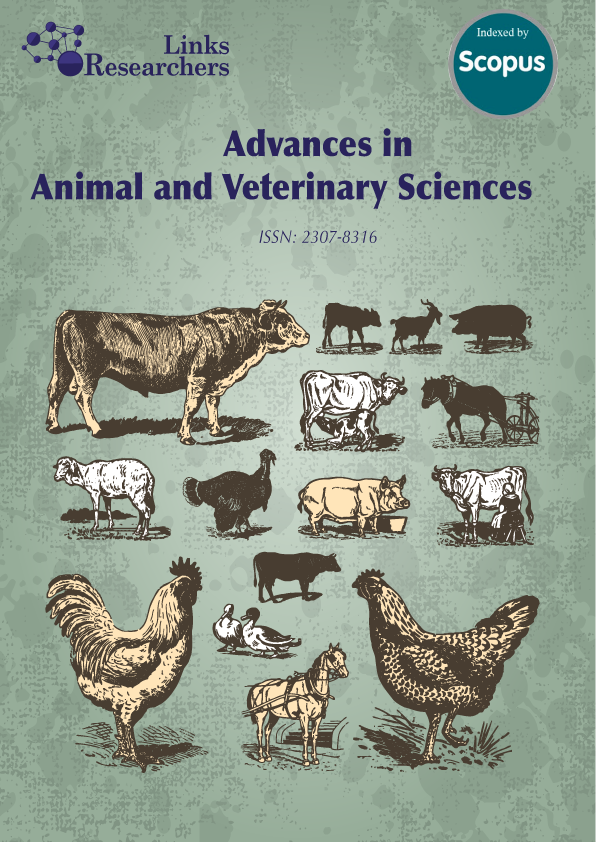Advances in Animal and Veterinary Sciences

Featuring
-
Utilizing Vaginal Cytology and Gelatin Zymography for Pregnancy Diagnosis in Pigs
Adsadawut Sanannam, Worawatt Hanthongkul, Yu-Jing Liao, Kunlayaphat Wuthijaree, Pattaraporn Tatsapong, Amornrat Wanangkarn, Anurak Khieokhajonkhet, Niran Aeksiri, Sureeporn Saengwong, Wilasinee Inyawilert
Adv. Anim. Vet. Sci., Vol. 12, Iss. 10, pp. 2015-2021
-
Blood Biochemical Indicators in Predicting Retained Placenta in Friesian Holstein Dairy Cows
Dwi Walid Retnawati, Mohamad Agus Setiadi, Iman Supriatna, Ligaya Ita Tumbelaka
Adv. Anim. Vet. Sci., Vol. 12, Iss. 10, pp. 2008-2014
-
The Balance of Rumen Degradable Protein with Non-Fiber Carbohydrate in Cattle Rations and its Effect on Total Gas Production, Gas Kinetics and Methane Gas Production
Muhammad Ariana Setiawan, Ujang Hidayat Tanuwiria, Andi Mushawwir
Adv. Anim. Vet. Sci., Vol. 12, Iss. 10, pp. 2000-2007
-
Combined Effect of Melatonin and Metformin in Mitigating Anxiety and Depression-Related Behaviors in Diabetic Mice Under Immobility Stress: Role of Oxidative Stress
Idrissi Ouedrhiri Housna, Bikri Samir, Benloughmari Douae, Aboussaleh Youssef
Adv. Anim. Vet. Sci., Vol. 12, Iss. 10, pp. 1989-1999
Subscribe Today
Receive free updates on new articles, opportunities and benefits

© 2024 ResearchersLinks. All rights Reserved. ResearchersLinks is a member of CrossRef, CrossMark, iThenticate.



